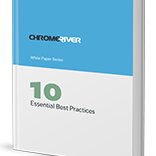 At the launch for a new technology initiative, the project team is often riding a “sugar high,” and executives have vaguely grand things to say. With any long-term project, whether it’s a “big data” initiative or implementing AP automation, the initial rush of enthusiasm eventually fades while the rewards seem far off. How can your organization keep up the momentum with worthwhile projects that take a while to reach maturity?
At the launch for a new technology initiative, the project team is often riding a “sugar high,” and executives have vaguely grand things to say. With any long-term project, whether it’s a “big data” initiative or implementing AP automation, the initial rush of enthusiasm eventually fades while the rewards seem far off. How can your organization keep up the momentum with worthwhile projects that take a while to reach maturity?
Leveraging data and analytics tools are great ways to create new assets from existing information, and many companies today are experimenting with “big data” projects, according to business technology blog GigaOM. Early adopters of “big data” and other large technology projects should remember they’re in for long-term processes and (hopefully) long-term benefits.
GigaOM offers three useful tips for keeping up the momentum.
- Seek out data that solves specific problems. Instead of trying to corral all the data resources you can — there’s no end to that game — start by asking the company’s leaders about their challenges, and what information they would need to overcome them. Then you can search for data sources that can provide that information, yielding meaningful solutions.
- Remain open to ongoing innovation. During the early stages of a “big data” or similar technology project, patience is crucial. Your project may require multiple iterations, or may turn out to have a very different role in your organization than initially planned. Both the solutions you’re seeking and the tools to build them are evolving rapidly.
- Use analytics to explore connections between business functions and departments. The GigaOM post notes an example from a leading manufacturer of computer processors. By analyzing relationships between the company’s design data and its manufacturing data, the company was able to accelerate its development and testing processes with significant savings.
With expense management software, for example, analytics tools can help business users track global and departmental spending, review past expenses, analyze current expenses, and compare past and present numbers across cost centers. By bringing these data sets together, managers can uncover trends and opportunities for improving performance.
Growth takes time — even in the fast-paced worlds of business intelligence and “big data.” What are some other tips you’d suggest for keeping a long-term technology project energized? Share your thoughts in the comments section!

Source: GigaOM, October 2013
Subscribe
Latest Posts
Posts by Category
I just love the Chrome River application. I could probably sell it! Finance Administrative Coordinator Law Firm, 800 Employees
Can’t we just move year-end, so that we can roll out Chrome River sooner!? Financial Systems Director Law Firm, 300 Employees

Comments